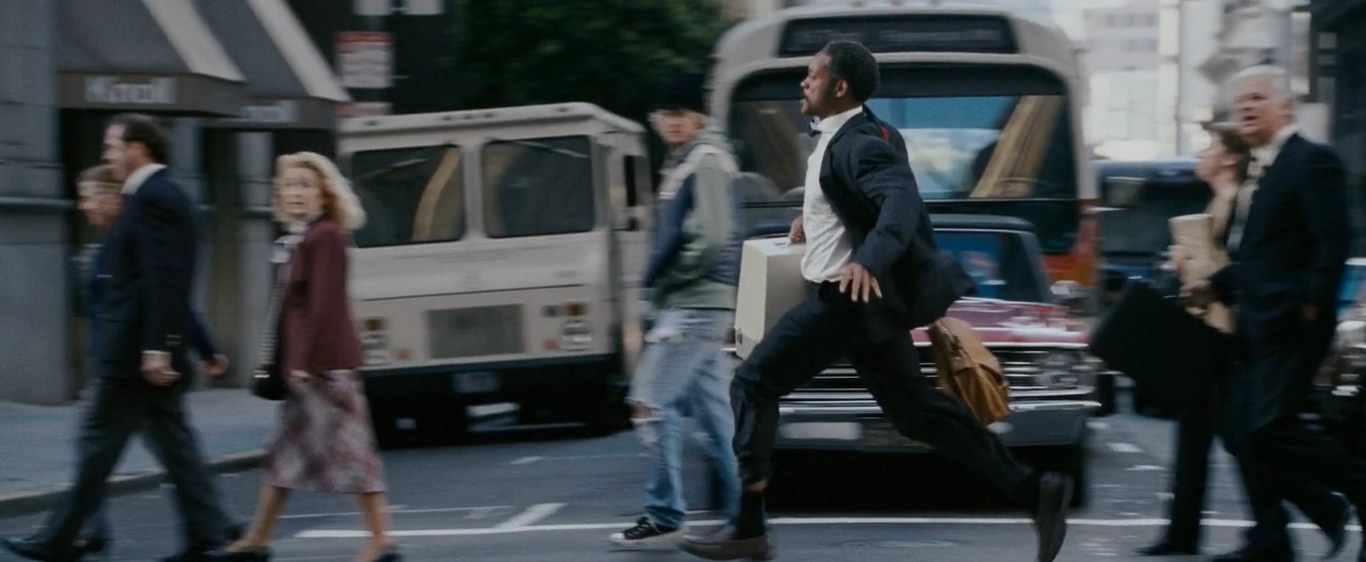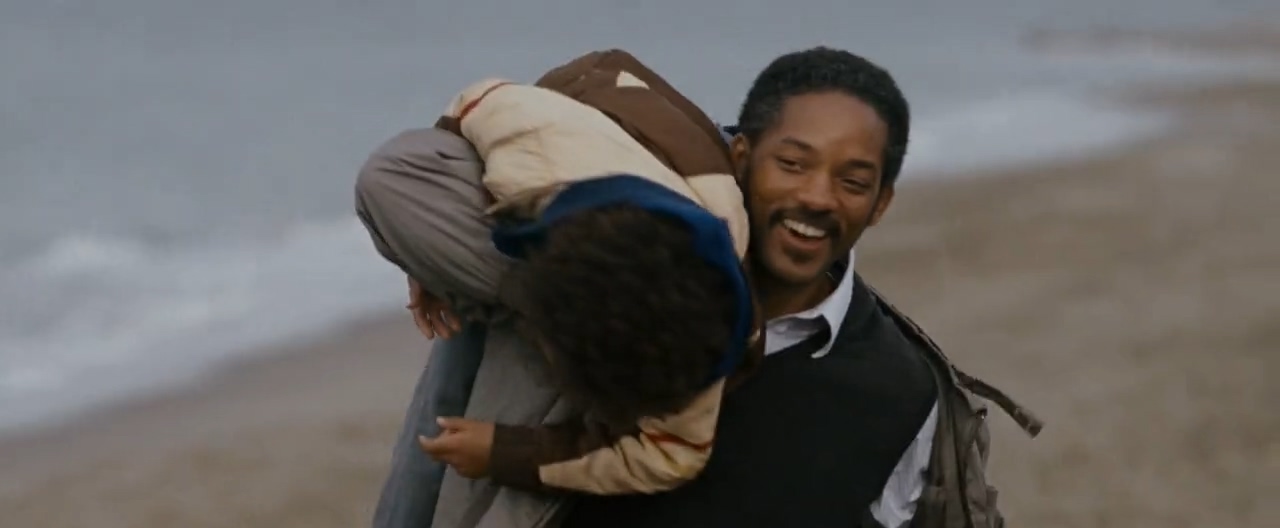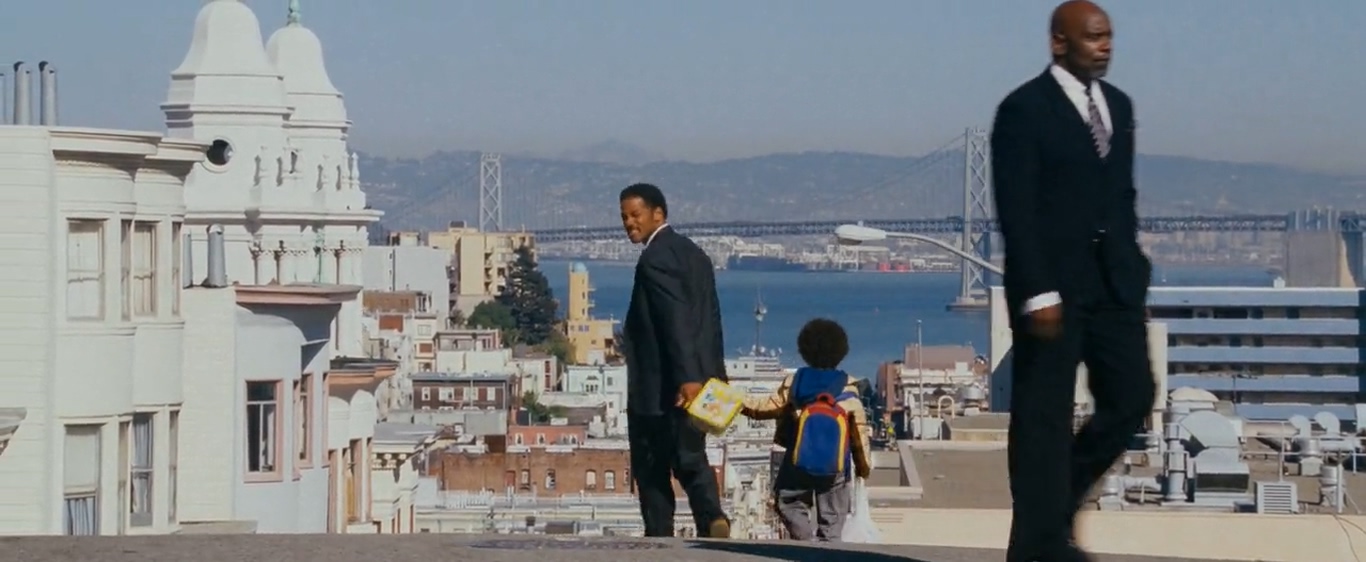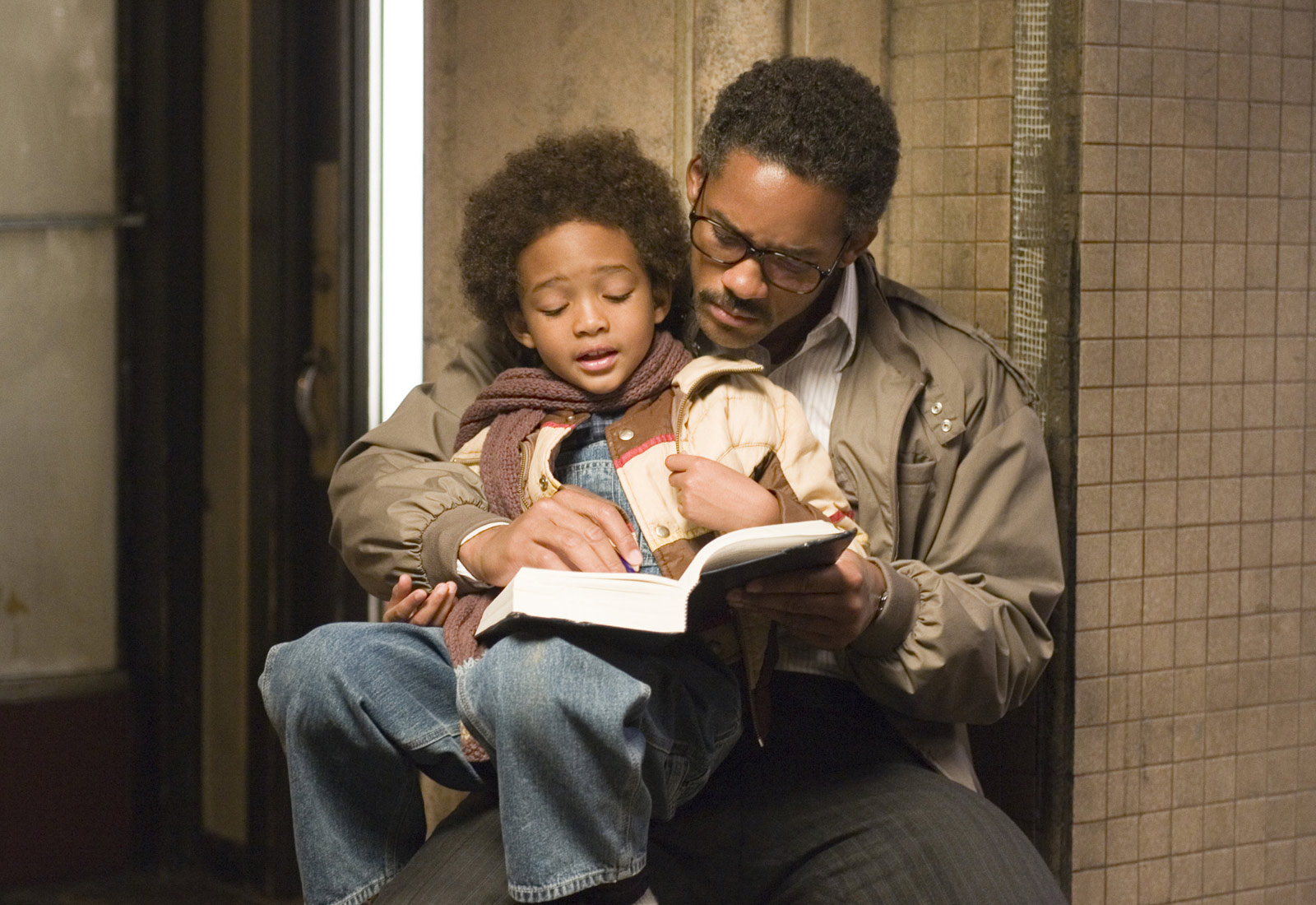Directed by Gabriele Muccino, ‘The Pursuit of Happyness’ is a poignant story about the plight and resilience of an African-American single dad chasing after happiness against all odds, with a “40-pound gizmo,” if you will. A seemingly standard Hollywood tale of rags to riches, this deceptively straightforward film conceals more than what is apparent on the surface. With a career highlight performance from Will Smith as Christopher Gardner, the narrative remains adequately layered and free from mawkish sentimentality. A genuinely moving story of a father and a son, it is also a stark depiction of the racial segregation apparent in the urban America of the 80s. Let us now walk the trails of thought that the film leaves unexplored. SPOILERS AHEAD.
The Pursuit of Happyness Plot Synopsis
In the first scene, we meet Christopher Gardner (Will Smith) and his son Christopher Gardner Junior (Jaden Christopher Syre Smith) walking down the avenue of downtown San Francisco. Father Chris is in his cheap salesman suit and baby Christopher is in his kindergarten dress. The father holds what seems to be a heavy piece of machinery, and after an episode of confusion, where a homeless person is led to believe that the machine is a time machine, the audience gets to know that it’s actually a “portable bone-density scanner”, which is the father’s trade. The camera then follows the protagonist as we see glimpses of his failing family life. His wife, Linda (Thandie Newton), is bitter and unhappy about their economic adversity while the loving husband and father spends another day trying to sell one of these machines.

On one of his burdensome sales trips, he stumbles upon a man pulling up in an expensive Ferrari on the side of the road. Upon inquiring about the man’s good fortune, Chris gets to know about the stockbroking business. When Chris proposes this newfound job prospect to his wife, he is met with contempt rather than encouragement. Keeping his faith, he enrolls himself for an internship program with the brokerage firm, Dean Witter Reynolds, and lands a job there by the end of the film.
Rough patches come his way – his wife leaves him, and he is thrown out of his apartment and then a motel due to failure to pay the rent. The father-son duo is forced to spend nights in homeless shelters, churches, and even in a subway bathroom – but these issues are never really enough to demotivate our larger-than-life protagonist. Although the audience gets to know the success story of the protagonist from the title cards, there remain some lingering questions that are not explicitly answered in the film.
The Pursuit of Happyness Ending: Is Being Happy Only About Being Rich?
Well, Chris gets the job in the end, along with the five dollars that he previously lent to Mr. Frohm. A quintessential story of rags-to-riches, at times it may feel like another Hollywood depiction of America as a neoliberal utopia where happiness equates to money. A closer inspection of the film, however, will reveal much more. We are reminded that happiness is also one of the unalienable rights endowed to an American citizen in the Declaration of Independence.

The film is firstly about finding the silver lining in testing times, and we laugh and cry with the characters as they remain poised, diligent, and nuanced till the end, never reaching the height of melodrama. Towards the end of the film, Chris takes his son to the Crissy Field beach to spend an afternoon together “far away from anything.” We feel the calm even though Chris admits to the constant pressure of disappointment that his mind harbors. The suggestion is that these moments, and not the countless handshakes, are what make happiness worth pursuing. In these moments, the film leaves its apparent Hollywood garb to embrace an Italian neorealist lens that one would expect from a Frank Capra or Vittorio De Sica film.
What does Chris’ Machine Signify?
While the burden of the protagonist is due to dire circumstances, symbolically represented by the machine that Chris has to carry around, it is also a burden of the volatile history of a nation that has managed to systematically segregate racial minorities through centuries of oppression. This is evident as the happy characters seen in the film are mostly middle-aged rich white males with sports cars. The people of color, on the other hand, are portrayed to be frustrated, crushed, and broken under a normalizing mechanism of racial discrimination, except an effortlessly charming Will Smith, of course.
While the film never tries to explicitly overcompensate for the plight of the protagonist, the director uses rapid camera movements and well-thought color palettes to bring the racial conflict to the fore. In the whitewashed office of Dean Witter Reynolds, we never encounter another African-American person besides Chris. Also, in one instance at a later point in the film, the panning camera follows a group of white people in a sports car before focusing on the queue of African-Americans in front of the night shelter to portray the stark inequality prevalent in the American society of the Reagan-era.
Who is the Man that Walks Past Chris in the Last Scene?

In the very last scene of the film, the audience sees a seemingly wealthy African-American man walking past Chris, who looks back at the man as the sunlight falls on his face. This could well be a silent gesture of acknowledgment between two African-Americans who have made it in a white-dominated America, and it structurally becomes more prominent against an all-white skyline of the city of San Francisco. However, upon further inspection, the unsuspecting audience will find that the man in the last scene is the actual Chris Gardner, the stockbroker and entrepreneur upon whose life the film is based.
Read More: Where Are Chris Gardner and His Son Now?


You must be logged in to post a comment.